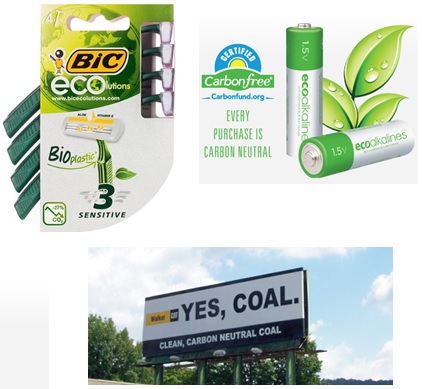If you walk into a grocery store almost anywhere in the United States, the first thing you see when you come in is produce. The produce section is a vast treasure trove of fruits, vegetables, and fresh herbs. When shopping for these—something most of us do each week—one immediate decision is whether or not to pay a little extra for “organic” products. We have to make a similar choice in the dairy aisle. And in other areas of the store, we have to decide if it’s worth it to pay extra for “all natural,” “GMO-free,” or “ethically/sustainably produced” goods.
Unfortunately, the terms that are used to convey that a product is environmentally friendly or sustainable are not always regulated or standardized. ELI will explore these challenges in its upcoming Members panel, “‘Green’ Claims: Is Environmental Marketing Meaningful or Misleading?”
The expert panelists will comment on developments in the regulation of ”green” marketing terms as well as voluntary standards and ethical consumerism. Cassie Phillips, Director of ELI’s Private Environmental Governance Initiative will moderate this event. The panel will also feature Anuradha Gokhale, a Staff Attorney at the Council of Better Business Bureaus; Randall M. Shaheen, a Partner at Venable LLP; and Jennifer Tucker, Associate Deputy Administrator of USDA’s National Organic Program. Full details on the event and panelists are available here.
Is This Organic?
Many of us in the environmental community want to be able to walk into our neighborhood grocery store, buy sustainably produced, organic veggies, and take pride in our mindful consumption. When it comes to produce, however, eco-minded shoppers must navigate a dizzying array of similar, but distinct labeling systems.
Within this broad category, there are numerous more specific distinctions. USDA “Certified Organic” foods must have an ingredients list and be 95% organic or “free of synthetic additives like pesticides, chemical fertilizers, and dyes, and must not be processed using industrial solvents, irradiation, or genetic engineering” However, there are other labels, like “100 Percent Organic”, which is actually a more stringent standard than “Certified Organic,” or “Made With Organic.” which means only 70% of the food must meet those standards.
Moreover, it is generally unclear whether the “organic” distinction equates to “safe” or “healthy”. The term “organic” merely conveys that the pesticides, chemical fertilizers, or dyes added not be synthetic. USDA has approved a list of “natural” (i.e., non-artificial and minimally processed) products that can be used for these purposes. However, public health advocates have raised concerns over numerous pesticides on the USDA-approved list, such as copper sulfate, which have natural origins but can nonetheless be harmful.
 If this already seems confusing, this issue goes way beyond “Certified Organic” food. According to Ecolabel Index, there are currently 203 ecolabels certifying products in the United States and 463 around the globe. These include everything from a Bird Friendly Coffee label, which requires growers to use shade management practices and provide good bird habitats, to the Certi-PUR US standard, which certifies that upholstered home products like mattresses are tested and ensured to contain only low-emission polyurethane foam. Everything from razors to batteries to coal claims to be friendly to the environment. While some of these claims are easier to evaluate than others, advertising isn’t always telling the whole story. Understanding exactly what we are getting when we purchase products with these labels can be a daunting challenge.
If this already seems confusing, this issue goes way beyond “Certified Organic” food. According to Ecolabel Index, there are currently 203 ecolabels certifying products in the United States and 463 around the globe. These include everything from a Bird Friendly Coffee label, which requires growers to use shade management practices and provide good bird habitats, to the Certi-PUR US standard, which certifies that upholstered home products like mattresses are tested and ensured to contain only low-emission polyurethane foam. Everything from razors to batteries to coal claims to be friendly to the environment. While some of these claims are easier to evaluate than others, advertising isn’t always telling the whole story. Understanding exactly what we are getting when we purchase products with these labels can be a daunting challenge.
For most of us, doing a dissertation worth of research before heading to the store is simply not an option. This does not mean, however, that we can’t be environmentally conscious consumers. Companies like the Ecolabel Index maintain an updated list of all the labels out there and what they truly mean, and the law protects us from fraudulent claims about our food and consumables in other ways. For example, the Better Business Bureau keeps consistent track of fraudulent companies, and the Bureau of Consumer Protection within the Federal Trade Commission stops “unfair, deceptive, and fraudulent business practices” by keeping track of complaints and suing companies making fraudulent claims about their products.
Altogether, making the environmentally friendly choice when buying produce or dairy or boxed mac and cheese is never a bad idea. But understanding exactly what that choice should be, and what various labels truly represent, is an important challenge as well.
